Tadoba-Andhari Tiger Reserve (TOI)
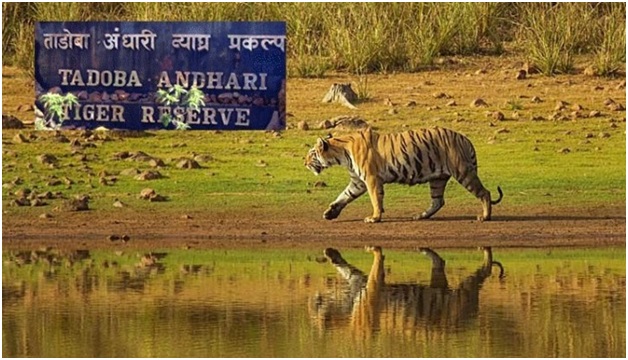
- 15 Nov 2023
Why in the News?
A dominant tiger named Bajrang said to have sired at least 50 cubs during his lifetime, recently died in a territorial fight with another powerful tiger, Chhota Matka, in the Tadoba-Andhari Tiger Reserve (TATR).
About Tadoba Andhari Tiger Reserve:
- Tadoba Andhari Tiger Reserve is the oldest and largest National Park in the Chandrapur district of Maharashtra.
- It is one of India's 47 project tiger reserves existing in India.
- The total area of the tiger reserve is 1,727 Sq.km, which includes the Tadoba National Park, created in the year 1955.
- The Andhari Wildlife Sanctuary was formed in the year 1986 and was amalgamated with the park in 1995 to establish the present Tadoba Andheri Tiger Reserve.
- The word 'Tadoba' is derived from the name of God "Tadoba" or "Taru," which is praised by local tribal people of this region, and "Andhari" is derived from the name of the Andhari river that flows in this area.
- Tadoba is presently home to more than 115 tigers, which is one of the highest in India.
- The vegetation of Tadoba forest is of Southern tropical dry deciduous type and is spread on around 626 sq. km.
- Teak is the prominent tree species in the forest.
- The Tadoba Tiger Reserve is rich in flora and fauna
- Flora: Some of the famous and widely seen flora of this park include Teak, Ain, Bija, Bamboo, Black Plum, and many others.
- Fauna: Tigers, Indian leopards, Sloth bears, Gaur, Nilgai, Striped Hyena, Spotted Deer, Barking Deer, Marsh Crocodile, etc.
Igla-S Missiles (TOI)
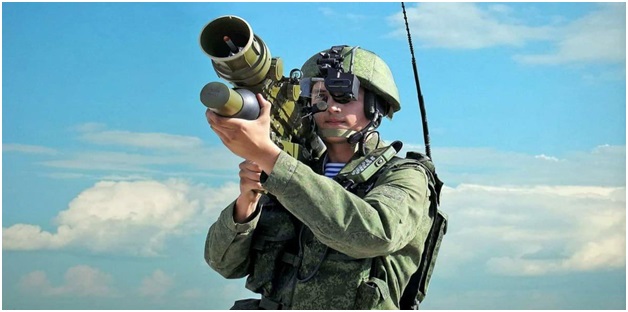
- 15 Nov 2023
Why in the News?
Recently, Russia has announced that it will supply the Igla-S man-portable air defense missile system to the Indian armed forces through licensed production by an Indian private company.
About Igla-S Missile System:
- The Igla-S is a man-portable air-defense system (MANPADS) developed by Russia.
- It is a surface-to-air missile (SAM) system which is also known as SA-24 Grinch in the West.
- The Igla-S entered service in 2004 and is currently in service with over 30 countries, including Russia.
- It is a highly effective and versatile weapon system that can be used to engage a wide variety of targets, including fixed- and rotary-winged aircraft, helicopters, unmanned aerial vehicles (UAVs), and cruise missiles.
- The Igla-S has a range of 5 km and an altitude of 3,500 meters including a speed of Mach 2.5.
- It is a "fire-and-forget" weapon, meaning that the operator does not need to track the target after launch.
- The missile's infrared homing seeker automatically guides it to the target.
- It is a very compact and lightweight weapon system, making it ideal for use by infantry troops.
- It can be easily transported and deployed in a matter of minutes.
- The Igla-S is used by a number of countries, including Algeria, Azerbaijan, Belarus, China, India, Iran, Iraq, Kazakhstan, Libya, Malaysia, Myanmar, Nicaragua, North Korea, Peru, Poland, Russia, Serbia, Syria, Venezuela, and Vietnam.
INS Sumedha (Financial Express)
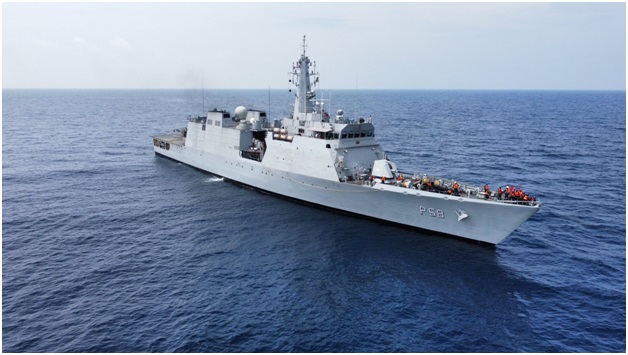
- 15 Nov 2023
Why in the News?
In a strategic move as part of the Indian Navy’s mission-based deployment to West Africa and the Atlantic, INS Sumedha conducted a port call at Walvis Bay, Namibia recently.
About INS Sumedha:
- INS Sumedha is a Saryu-class, Naval Offshore Patrol Vessel (NOPV) of the Indian Navy.
- It is the third ship of the class to be commissioned and was built by Goa Shipyard Limited in India.
- The ship was commissioned in March 2014.
- INS Sumedha is designed to undertake a variety of missions, including fleet support operations, coastal and offshore patrolling, ocean surveillance, and monitoring of sea lines of communication and offshore assets.
- The ship is also capable of carrying out humanitarian assistance and disaster relief (HADR) operations.
- INS Sumedha has been deployed on a number of operational missions, including:
- Operation Kaveri, the evacuation of Indian citizens from Sudan in April 2023.
- The ship has also participated in a number of international exercises, including Exercise Bright Star 2023 in Egypt.
About Walvis Bay:
- Walvis Bay is a city on the coast of Namibia, in the Erongo Region.
- It is the second-largest city in Namibia, after Windhoek, and is the capital of the Erongo Region.
- It is a major port city, and is the main port for Namibia.
- The port is home to a number of shipping companies and is a major export center for Namibian goods, such as fish, minerals, and diamonds.
- Originally a German enclave during the colonial era, Walvis Bay became a vital part of Namibia after gaining independence in 1990.
- The official language of the city is English, but Afrikaans, German, and Portuguese are also spoken.
Asian Development Bank (The Hindu BusinessLine)
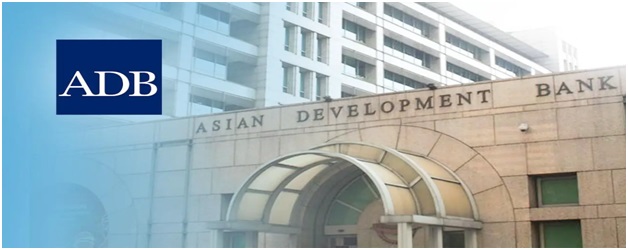
- 15 Nov 2023
Why in the News?
The central government recently signed a USD 400 million policy-based loan with the Manila-based Asian Development Bank (ADB) to support its urban reform agenda to create high-quality urban infrastructure, improve service delivery, and promote efficient governance systems.
About Asian Development Bank (ADB):
- The Asian Development Bank (ADB) is a regional development bank headquartered in Manila, Philippines.
- It was established in 1966 to promote economic development and cooperation in Asia and the Pacific.
- The ADB's primary goal is to reduce poverty in its member countries.
- The bank provides loans, grants, technical assistance, and policy advice to its member countries.
- It also mobilizes private sector investment through its private sector arm, the Asian Development Bank Private Sector Operations.
- It has 68 member countries, including 49 countries in Asia and the Pacific, and 19 non-regional developed countries.
- The ADB's annual lending volume is around $32 billion.
- As of 2022, ADB's five largest shareholders are Japan and the United States (each with 15.6% of total shares), the People's Republic of China (6.4%), India (6.3%), and Australia (5.8%).
- Source of Funding: It relies on member contributions, retained earnings from lending, and the repayment of loans for the funding of the organization.
The bank's strategy is focused on four key areas:
- Promoting sustainable growth: The ADB is committed to supporting its member countries in achieving their sustainable development goals by financing infrastructure, clean energy, and climate change mitigation and adaptation projects.
- Tackling poverty and inequality: The ADB is providing financing for education, health, social protection, and other programs that benefit the poor and vulnerable to reduce poverty and inequality in its member countries.
- Strengthening regional cooperation: The ADB is promoting regional cooperation and integration in Asia and the Pacific.
- The bank is supporting its member countries in developing regional infrastructure, trade, and investment projects.
- Responding to crises and disasters: The ADB is helping its member countries prepare for and respond to crises and disasters by providing finances for disaster risk reduction and resilience projects.
One Station One Product’ scheme (New Indian Express)
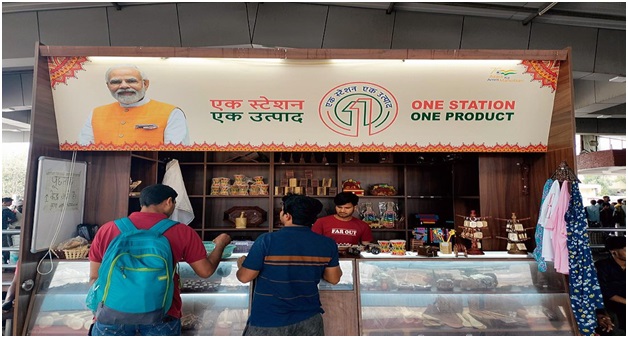
- 15 Nov 2023
Why in the News?
The Indian Railway has established more than a thousand outlets in railway stations across the nation under its ‘One Station One Product’ (OSOP) initiative which aimed at providing a platform for skilled artisans to sell their indigenous products.
About One Station One Product’ (OSOP):
- The OSOP scheme is a unique initiative by the Indian Railways and aims to provide livelihood opportunities through skill development to local artisans, potters, weavers, and craftsmen.
- It was announced in the Union Budget 2022-23.
- The scheme, designed by the National Institute of Design, Ahmedabad, provides distinctive outlets that give high visibility to indigenous products, benefiting local craftsmen.
- Railways allot the outlets at its stations through a tendering process.
- The scheme’s outreach measures include advertising, social media, public announcements, press notifications, and personal visits to artisans.
- The products at these outlets range from artifacts and handicrafts to textiles and traditional appliances, indigenous to the region, and are crafted by local artisans or tribals.
- They also include locally made or grown food products in processed or semi-processed forms.
- It provides uniquely designed sale outlets for locals to sell indigenous products, and is now operational at 1,037 stations nationwide.
